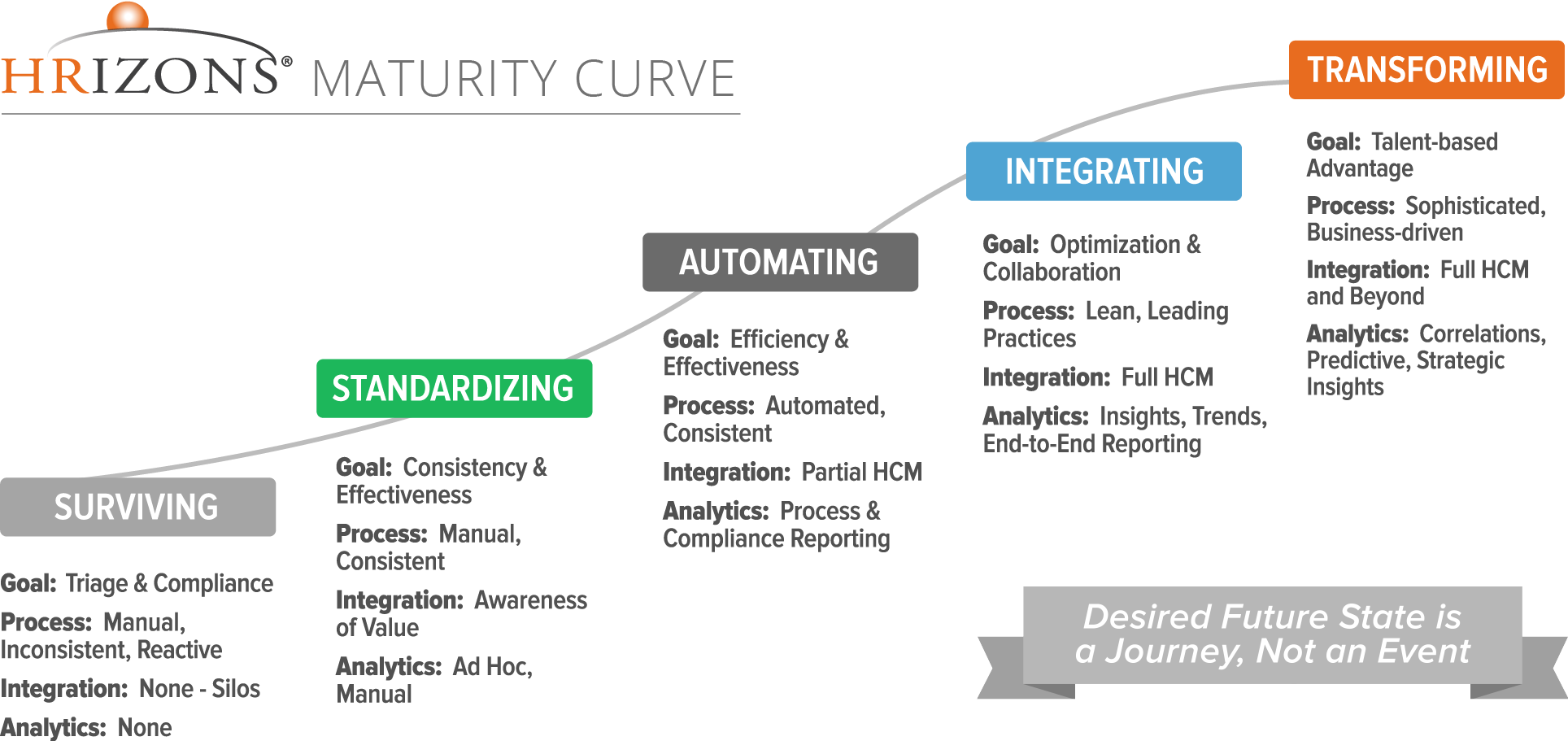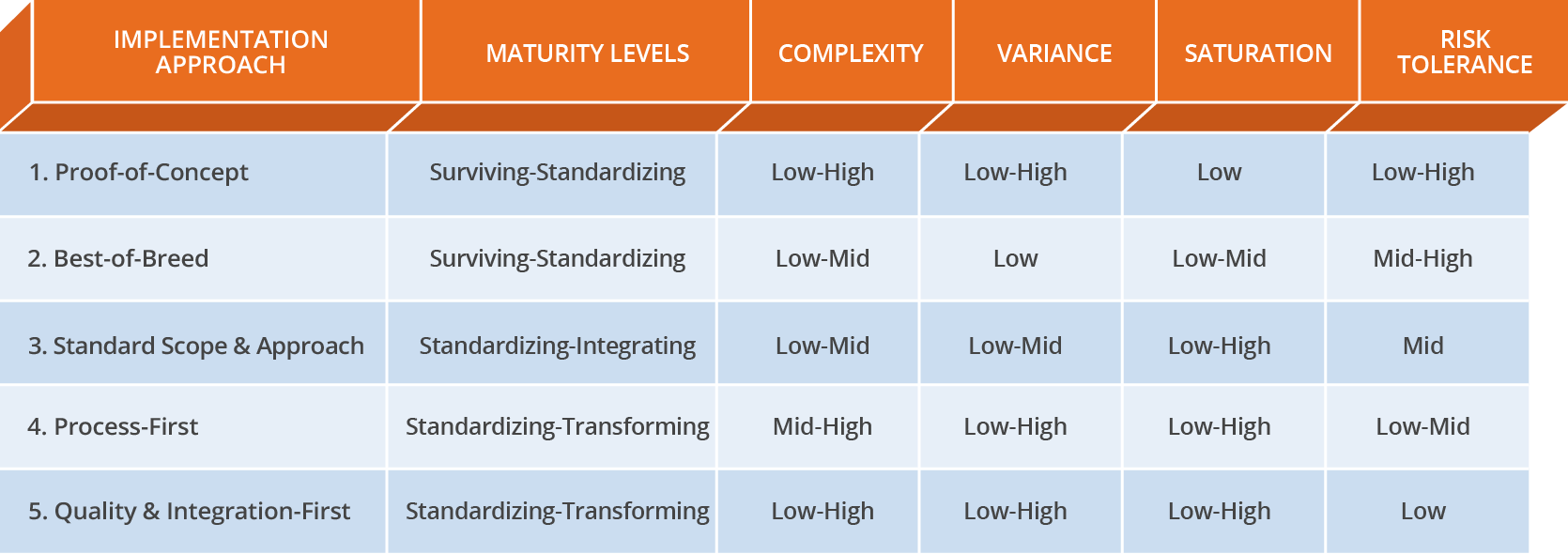 Software-as-a-Service (SaaS), Cloud as it is now referred to, has been around since 2001 and yet so many companies and implementation partners continue to use the same canned approach to implement modules or even entire suites – gather a few requirements, fill out the vendor’s configuration workbook, configure the system to meet those requirements, and hope that you made all the right decisions.
Software-as-a-Service (SaaS), Cloud as it is now referred to, has been around since 2001 and yet so many companies and implementation partners continue to use the same canned approach to implement modules or even entire suites – gather a few requirements, fill out the vendor’s configuration workbook, configure the system to meet those requirements, and hope that you made all the right decisions.
The reality? One size does not fit all and too many implementations end up failing to produce the expected results – end-user adoption and desired behavior change.
This blog examines five approaches companies should consider when planning their Cloud implementation. Choosing the right approach(es) can make the difference between a failed implementation and stellar success. Before discussing the approaches let’s explore five factors that influence the selection decision. Depending on which factors are at play, you may find that more than one approach will be necessary for implementing different modules.
Maturity – the maturity level of the target process has a significant impact on the implementation approach to use. Low maturity processes (e.g., paper-based processes) suggest low organizational commitment and a general openness to ‘a better, faster way of doing things’. Alternatively, high maturity processes (e.g., an integrated, system-driven process) would suggest greater organizational commitment and less openness to change.

Complexity – a basic or simple process will lend itself to more implementation approaches. A complex process with many steps and prescribed roles will typically require more effort to support and push the limits of the software. It may require more effort to optimize, troubleshoot or harmonize.
Variance – the more variations of a process across the enterprise the more challenging the implementation. This is also a key decision point – do you honor the variance or do you promote standardization? As a general rule standardize whenever possible and have a compelling business case (regulatory or legislative) for maintaining two or more process variants.
Saturation – this refers to how common the process is to the workforce and how established the process is across the enterprise. Highly saturated processes like performance management affect all users and will take more effort to change, and may present more implementation risk as a result.
Risk Tolerance – regulated industries like healthcare, pharmaceutical, food products, and energy industries – that are subject to strict process controls – generally have a lower tolerance for risk and require a higher quality, more controlled and predictable implementation approach. Risk mitigation and compliance management is paramount.
Five approaches to consider for the implementation of any module.
- Proof-of-Concept – this approach is ideal for processes that are relatively new to a company like workforce planning. The idea is to build a simple, repeatable process in order for the HR team to ‘try it on for size’. This approach is ideal for those processes low on the 5 Factors.
- Best-of-Breed – this approach is ideal for those processes that are broken or poorly designed. It offers the advantage of rapid deployment, leading practices and occasionally cost savings, however these advantages can be offset by a higher change impact. This approach is ideal for those processes low on the Factors other than Quality.
- Standard Scope and Approach – this approach is for well-established processes that either need to be automated or re-implemented on a new technology platform. This is the standard approach vendors and consulting firms typically adopt. It assumes the client knows what they want and need. This approach is ideal for more mature, standardized and established processes.
- Process-First – this approach is ideal for organizations with disparate systems and decentralized processes that wish to achieve the benefits of integration and standardization. This two-phase approach involves first harmonizing the disparate processes wherever possible to a common ‘leading practice’ design. Once this has been achieved the configuration follows. This approach is ideal for federated organizations with highly varied and complex processes. Change management is key to success.
- Quality & Integration-First – this approach is for those companies: with a low tolerance for a failed implementation, that are subject to strict quality requirements such Six Sigma or ISO, and/or that need integration to go deeper than simply purchasing an integrated system. It is similar to the process-first approach above but is preceded with ‘SIPOC’ mapping. This involves mapping Sources (upstream systems), Inputs (data), Processes, Outputs (data) and Consumers (downstream systems). This approach requires the most effort, but produces results that are more predictable and successful as they consider good process design as well as all upstream and downstream dependencies of the greater system.

By considering these five factors and approaches during the program planning phase of the implementation organizations will be in a much better position to plan, budget and resource for success.



